Dive
day: Dow drops 800 points, S&P falls 2.9% on recession fears
RT,
14 August, 2019
Stock fell and demands for bonds rose as the markets interpreted Treasuries rates as a signal preceding a recession. Dow Jones has closed down 800 points, with other stock indexes plunging as well.
US stocks dropped between two and three percent across the board by early Wednesday afternoon. The Dow Jones Industrial Average (DJIA) was down 800 points, NASDAQ down over 240 points, and the S&P 500 dropping 85 points.
The slide was attributed to the “inverted gap” in rates for short- and long-term US Treasury bonds, which was taken as a warning that normally precedes a recession. Goldman Sachs Group led the rout of financial stocks, falling by four percent.
Dow tumbles more than 660 points or 2.5% to fresh session low; Nasdaq falls nearly 3% cnb.cx/2TAsmCy
84 people are talking about this
The inverted yield curve refers to short-term bond rates being higher than long-term ones, which is taken as a sign of investor concern about the economy. Yields on 10-year Treasury bonds have just slipped below the yields for 2-year bonds, for the first time since the 2007 run-up to the Great Recession.
US President Donald Trump described the situation as “tremendous amounts of money pouring into the United States,” adding that “people want safety!”
He also criticized the Federal Reserve for acting “far too quickly and now is very, very late.”
“The Fed has got to do something! The Fed is the Central Bank of the United States, not the Central Bank of the World.” Mark Grant @Varneyco Correct! The Federal Reserve acted far too quickly, and now is very, very late. Too bad, so much to gain on the upside!
19.2K people are talking about this
Trump’s critics have wished for a recession in order to scuttle his 2020 re-election bid, and the hashtag #TrumpRecession has already begun trending on social media.
A recession has closely followed a yield-curve inversion 9 out of 10 times since 1955. #TrumpRecession
https://www.rt.com/usa/466510-trump-clueless-powell-crazy-yield/
https://www.rt.com/business/466462-us-mortgage-debt-increase/
The benchmark top-50 index has fallen more than 170 points or 1.58 percent since trading opened at 10am.
It follows the falls in the United States and Europe after a closely watched bond indicator pointed to the growing risk of a US recession that was heightened by data showing Germany's economy in contraction and China's worsening.
Yields on two-year US Treasury notes rose above the 10-year yield for the first time since 2007, known as an inverted yield curve, which is widely seen as a classic recession signal.
US stocks fell about 3 percent and major indices in Europe closed down 2 percent, while crude prices slumped almost 4 percent.
The tone for markets was set by data showing Germany's economy contracted marginally in the three months ended June, with Chinese industrial production rising at its weakest pace since 2002 adding to investor fears of a global economic slowdown in.
"The combination of those three things (yield inversion, Germany's GDP and Chinese industrial production) has refreshed fears of a global slowdown," Michael Arone, chief investment strategist at State Street Global Advisors said.
"We're seeing that flow through to stock prices falling and yields across the globe plummeting as well."
Negative interest rates from the European Central Bank and Bank of Japan are creating an adverse effect on yields everywhere, including the United States, Mr Arone said.
"How much more can US interest rates rise in the face of all those low interest rates? In a lot of ways it's almost like the medicine continues to make the patient more sick," he said.
The slide in stock prices continued the volatile trend this week when key indices have been on a roler coaster ride of surging gains one day following precipitous falls.
Part of the volatility is explained by automated, programme trading triggered by the yield inversion.
"This level of sell-off is primarily driven by institutional program trades," Randy Frederick, vice president of trading and derivatives for Charles Schwab, said.
"Moves of this magnitude are mostly driven by programs that are tied to the inverted yield curve".
The volatility was just as evident in commodity markets where Brent crude oil futures dropped 3.8 pct to $58.94 a barrel, while gold, often bought as a safe asset, rose 1 pct to $1516 an ounce.
"There is plenty of doom and gloom to spread across the globe," John Doyle, vice president for dealing and trading at investment firm Tempus Inc, said.
There is a growing consensus that parts of Europe Germany, Italy and the UK are headed for a recession.
- RNZ/Reuters
https://www.rnz.co.nz/news/business/396724/share-market-tumbles-as-us-recession-fears-grow
#EpicPolicyFail
Chinese stocks played catch-up with US stocks yesterday after the hope-filled tariff-delay comments...
Source: Bloomberg
European stocks were dumped today...
Source: Bloomberg
Meanwhile, elsewhere in Europe, that insane 2117 maturity Austrian bond reached $200 (after being issued at $99.502 in 2017), up 72% YTD
Source: Bloomberg
The duration of the bond is set to be around 44 years, making it the bond with the highest duration in the euro zone government debt market.
And as yields collapsed, European banks broke key support...
Source: Bloomberg
US and China stocks are exactly matched YTD (up around 14%) while Europe lags...
Source: Bloomberg
Ugly day for US stocks (down broadly 3%) as stops were run yesterday and dismal data from China and Germany sparked a big de-risking...
And on the week...
Weakest close on The Dow since June 4th and a huge drop - down 801 points - the biggest since Oct 31st.. (on 8/5 The Dow dropped 767 points, 12/04 -799pts, 10/31 -832).
Today's dump occurred after a 3rd failed test of the Fib 61.8% retrace of the July tumble...
The Dow closed below its 200DMA
Party like its 1998...
Source: Bloomberg
Bank stocks were battered, once again catching down (relative to the broad market) to the collapsing yield curve (how many more false starts in financials will traders willing bid for)
Source: Bloomberg
Treasury yields collapsed today, led by the long-end (30Y -13bps, 2Y -8bps)...
Source: Bloomberg
2s30s has crashed further into the red for the year...
Source: Bloomberg
The 30Y Treasury yield tumbled to an all-time record low today, trading as low as 2.01%...
Source: Bloomberg
And the 10Y term premium tumbled to a record low...
Source: Bloomberg
The yield curve completed its inversions today with 2s10s finally crossing the zero line...
Source: Bloomberg
For the first time since 2007...
Source: Bloomberg
Don't worry about recession though because former Fed Chair Yellen said the yield curve may be less of a reliable signal at the moment. Thanks Janet!
Germany, Canada, and UK also inverted.
And the 2s10s swap curve is its most inverted ever...
Source: Bloomberg
And don't forget, a flattening 2s10s curve has historically led to a secular rise in volatility...
Source: Bloomberg
Having trodden water for 2 weeks since the spike and dump on Powell and Tariffs, the dollar broke back higher today...
Source: Bloomberg
Offshore Yuan slipped back below the fix...
Source: Bloomberg
And options traders are betting that the HKD breaks the peg...
Source: Bloomberg
As Bloomberg's Gregor Stuart Hunter notes, the Hong Kong dollar’s peg to its U.S. counterpart -- unbroken since the 1980s -- is drawing some skepticism as anti-government protests swell. Options traders are paying the most since 2016 for bets that the currency tests or breaches its 7.85 per dollar limit, relative to a contrary wager that the currency strengthens. “Folks are looking at the Hong Kong protests and don’t see any off-ramp, just escalation, and pushing up the risk premium,” said Cliff Tan, head of global markets research for East Asia at MUFG Bank.
Emerging Market currencies have re-collapsed to recent cycle lows...
Source: Bloomberg
Cryptos were clubbed like baby seal...
Source: Bloomberg
As Bitcoin bounced off $10,000...
Source: Bloomberg
Gold gained on the day despite dollar strength but oil was pounded...
Source: Bloomberg
Gold prices retraced yesterday's lows as safe-haven bids hit...
Negative-yielding debt continues to soar...
Source: Bloomberg
BofAML's Commodity Strategist Michael Widmer argues that successive rounds of monetary easing have had a series of side effects, including higher gold prices. Widmer notes that successive rounds of easing have delivered less bang for the buck and markets are much less enthusiastic about further stimulus. Quantitative failure, under which markets refocus on elevated debt levels or the lack of global growth would likely lead to a material increase in volatility. At the same time, and perhaps perversely, such a sell-off may prompt central banks to ease more aggressively, making gold an even more attractive asset to hold. Although his 2Q20 forecast is $1,500/oz, (where Gold trades today), in this sell-off scenario, he sees the potential for gold to rise towards $2,000/oz.
Oil prices cratered today, erasing all of yesterday's gains.
Finally, as Albert Edwards warns:
"The answer seems pretty obvious to me. The bond markets are telling us that the cycle is ending with the central banks having failed to drive core CPI inflation higher.So Japanese-style outright deflation lies ahead at a time when western economies have piled debt sky high."
Who could have seen that coming?
Gold tops stocks YTD and bonds are about to overtake the S&P too...
Source: Bloomberg
The dollar shortage continues...
Source: Bloomberg




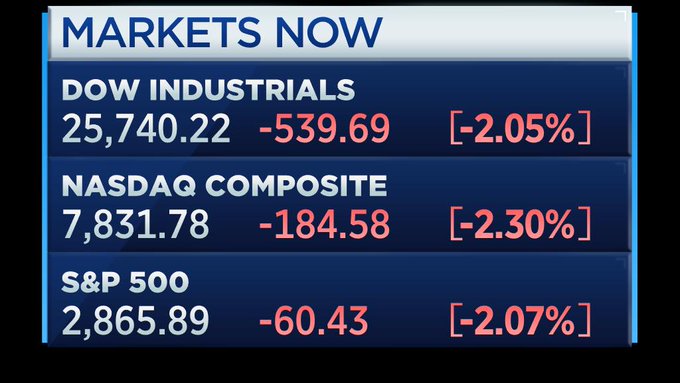
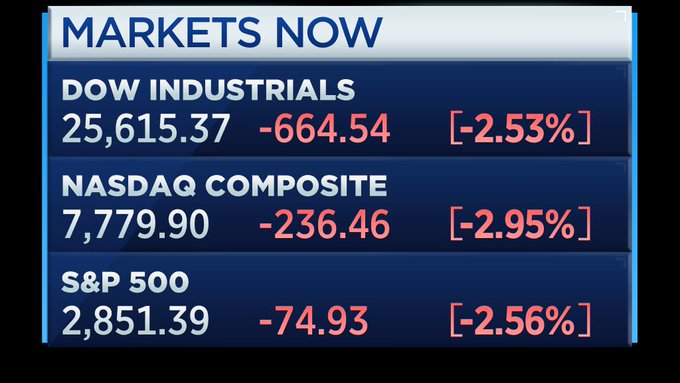


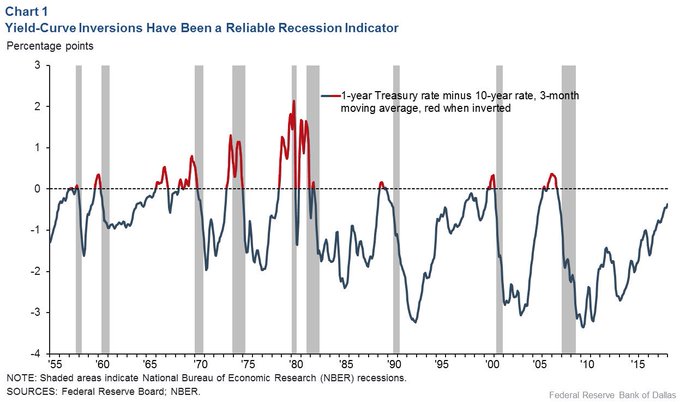



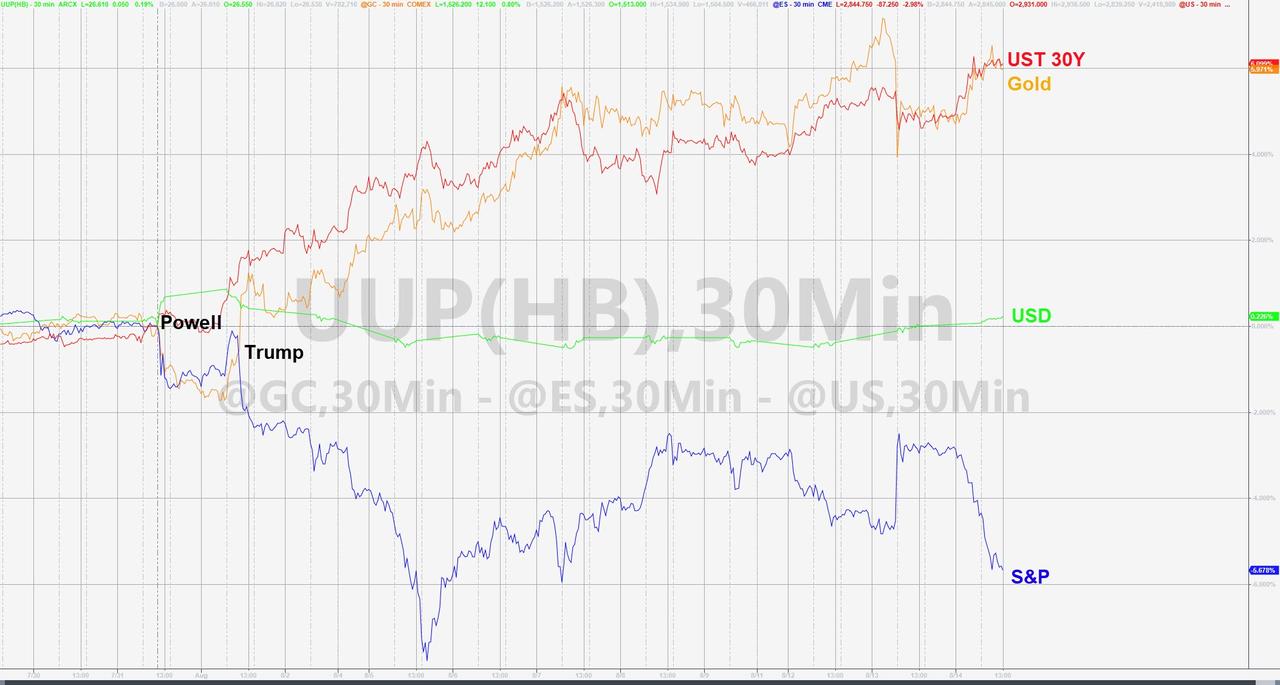
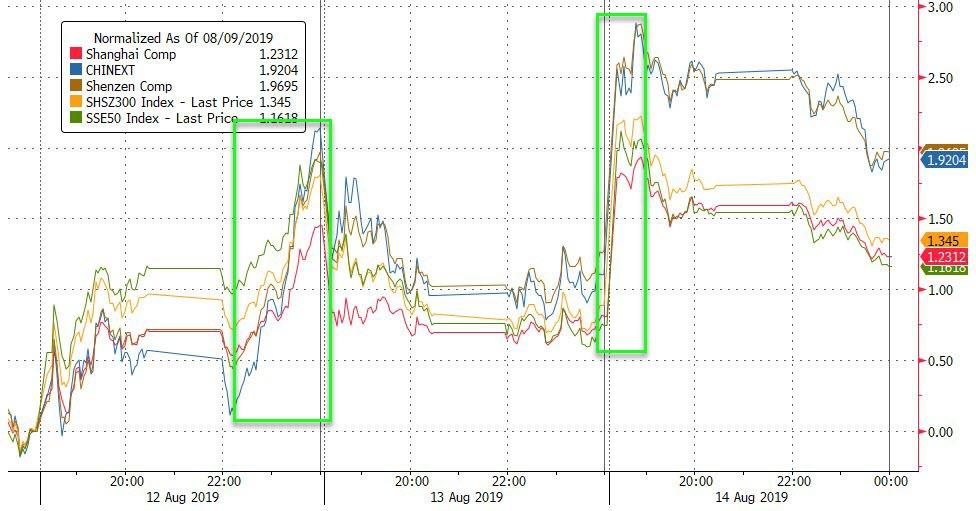
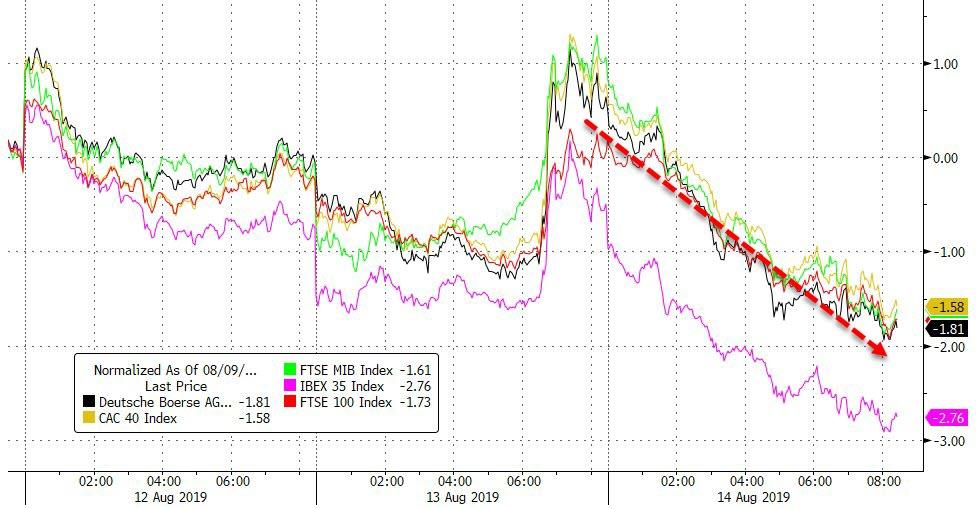
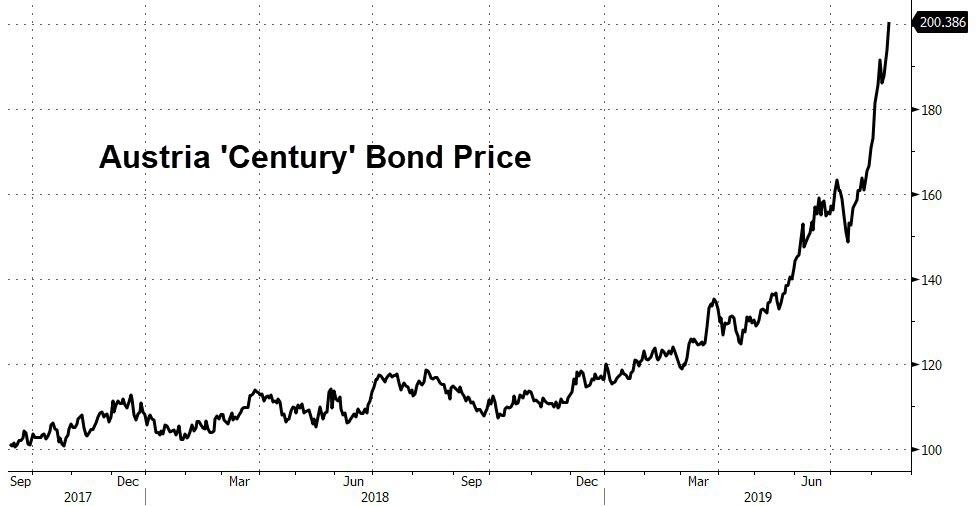
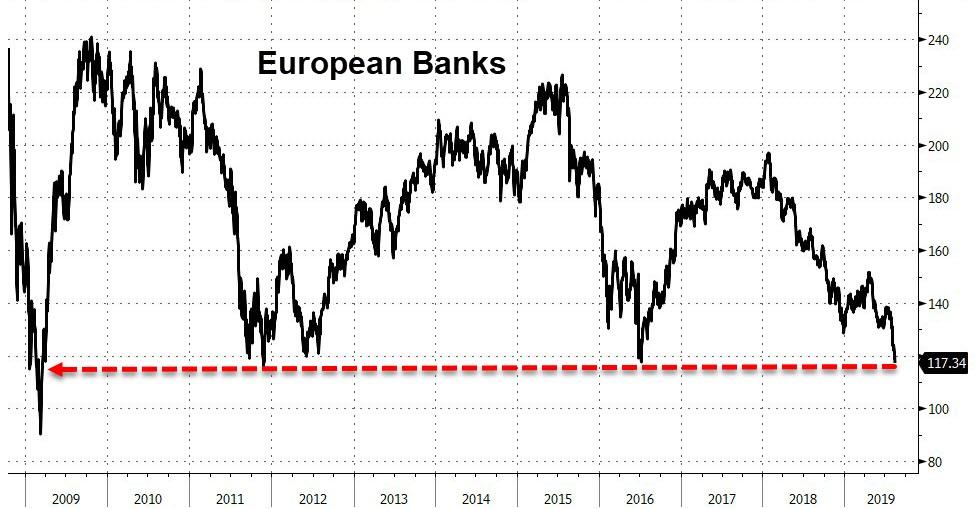
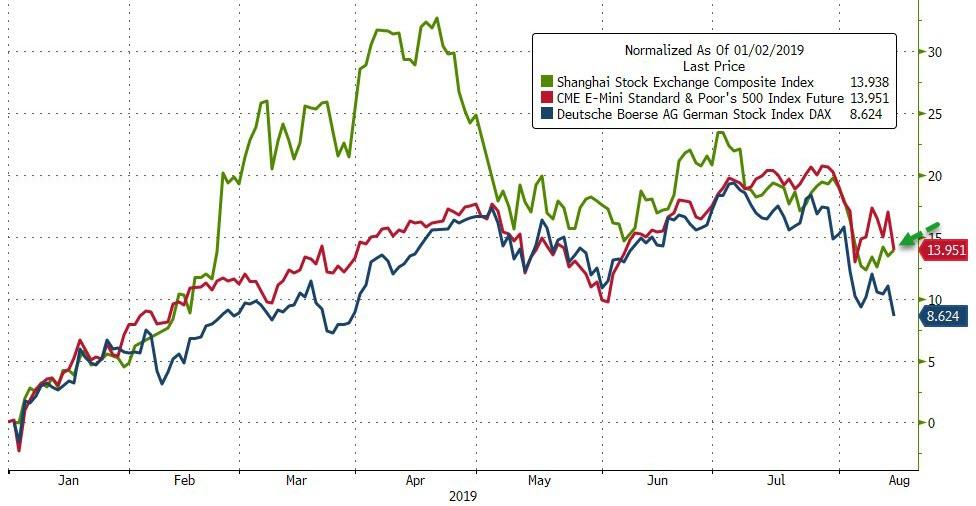
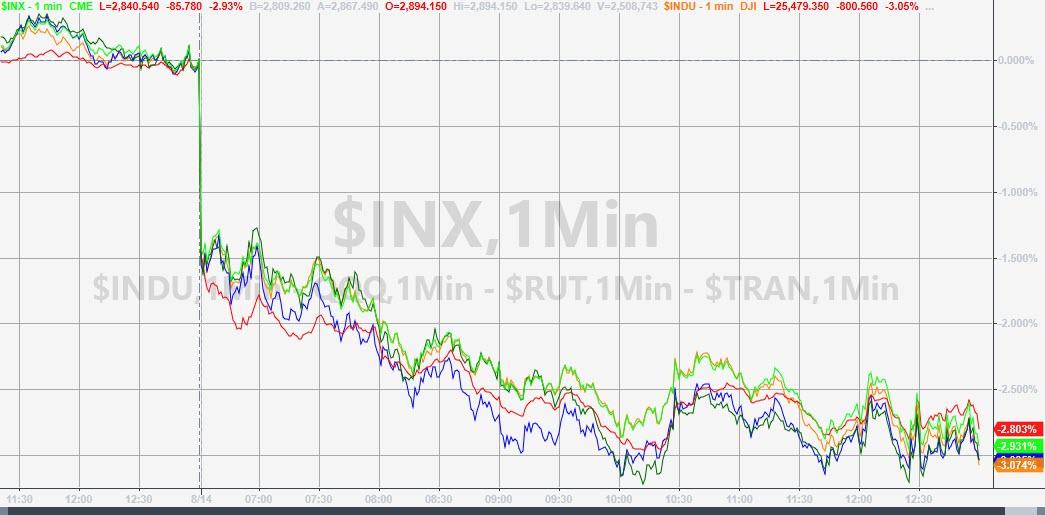
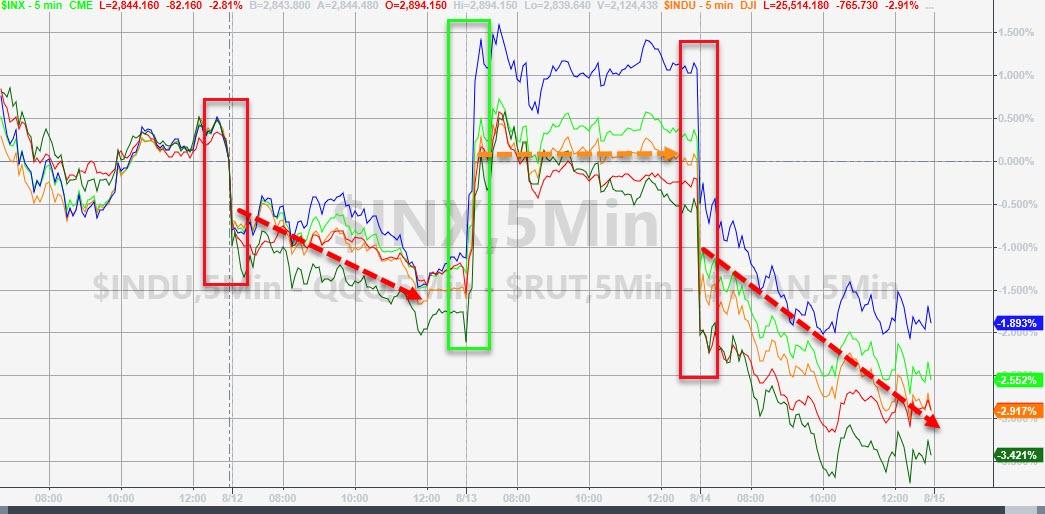
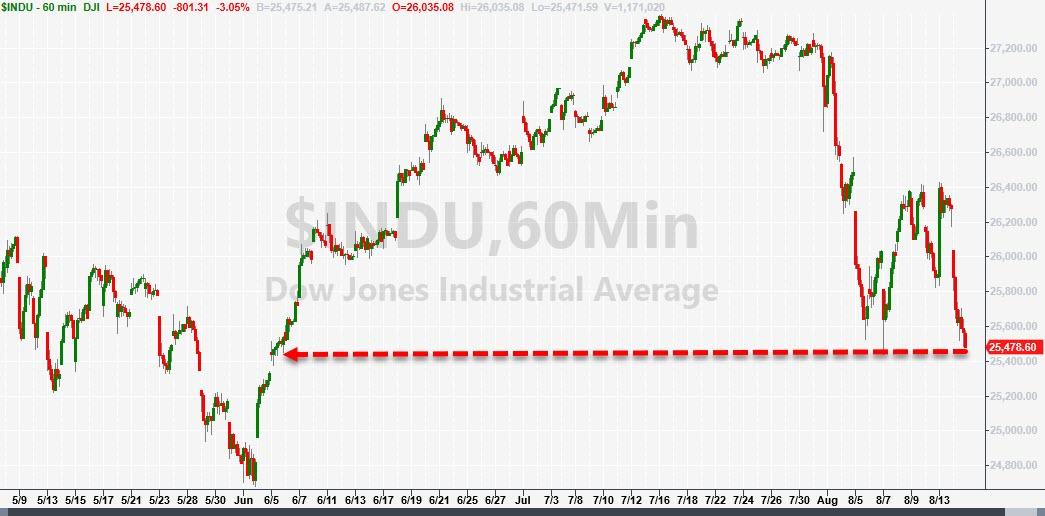
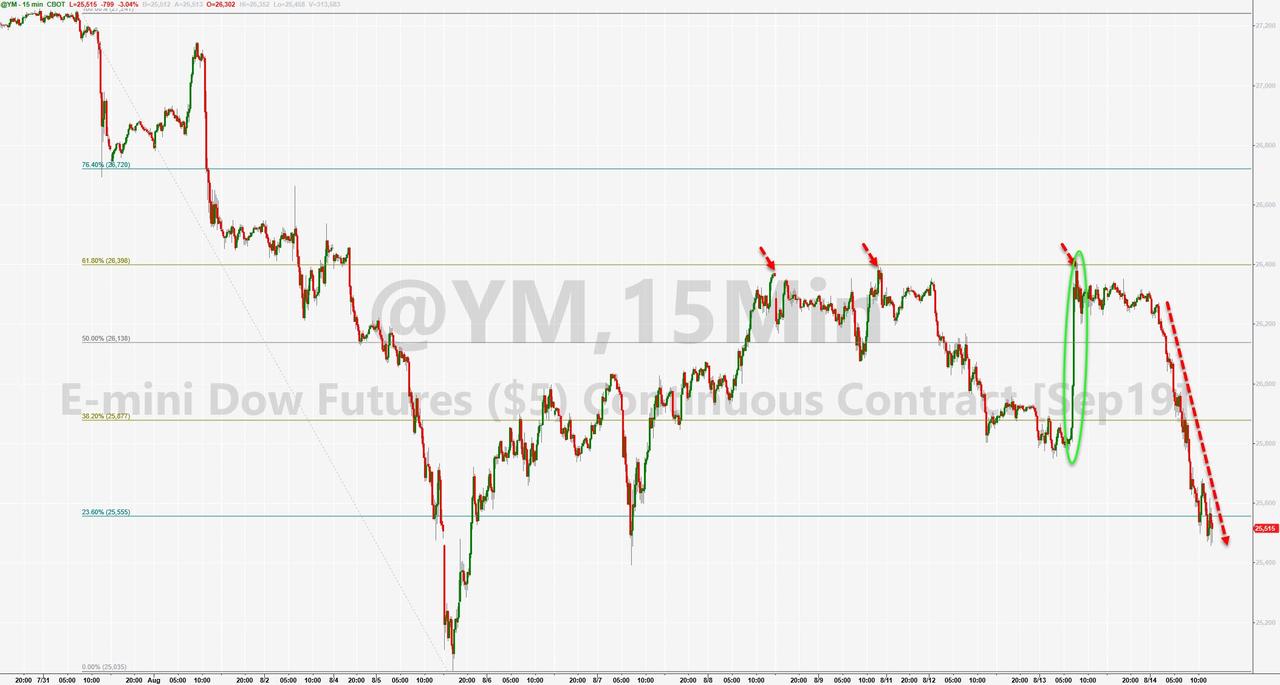
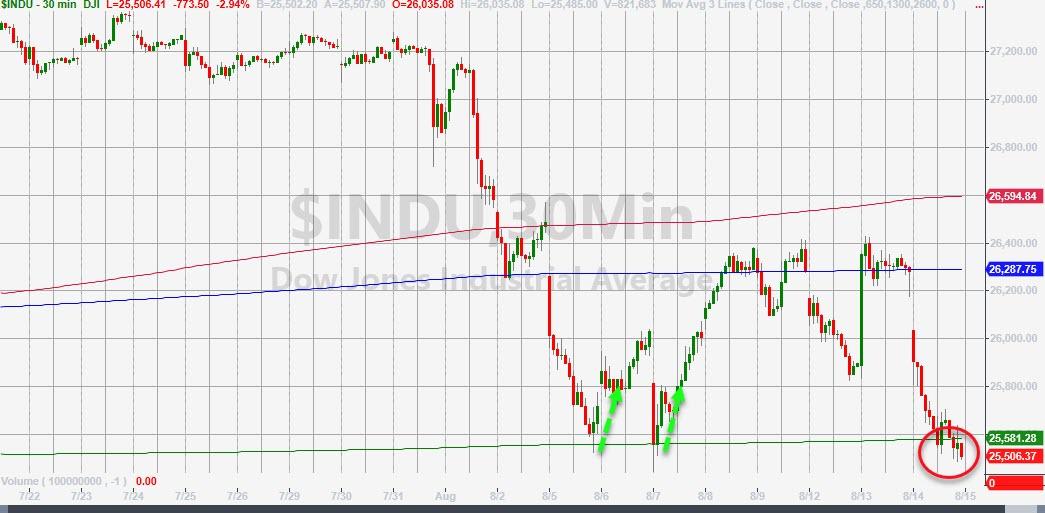
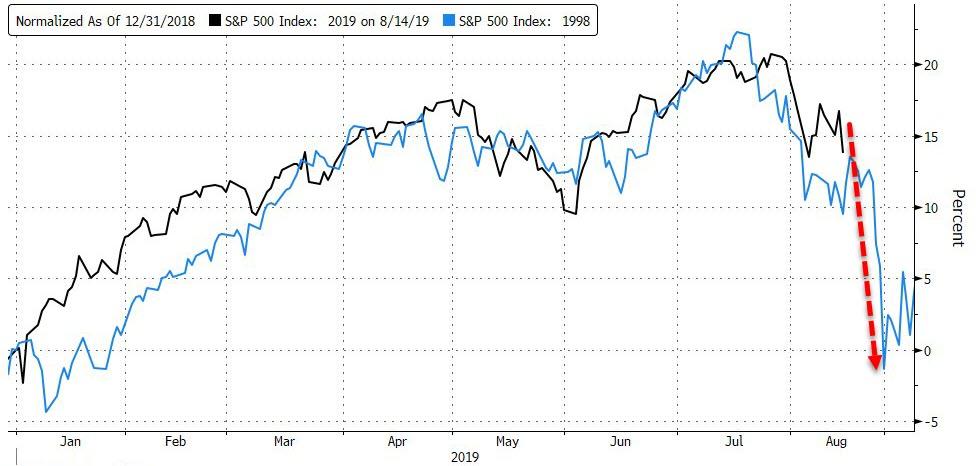
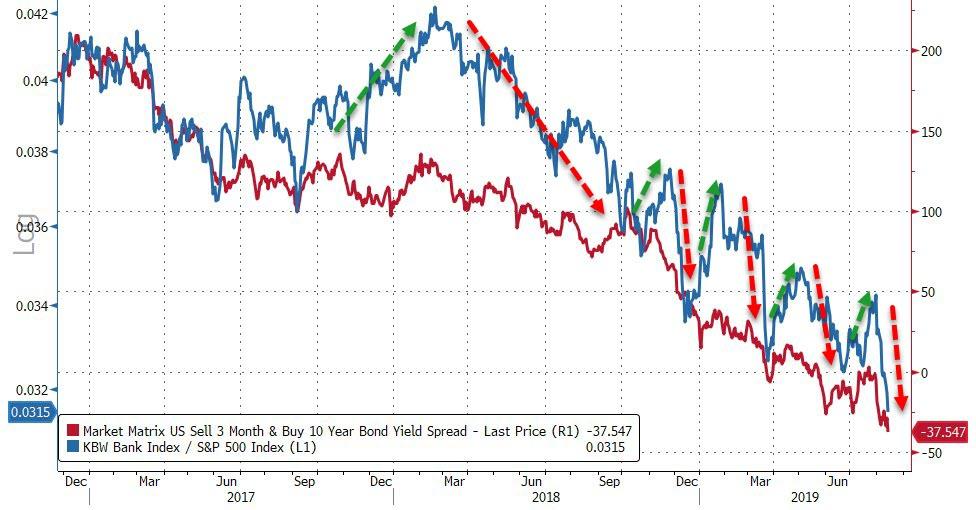
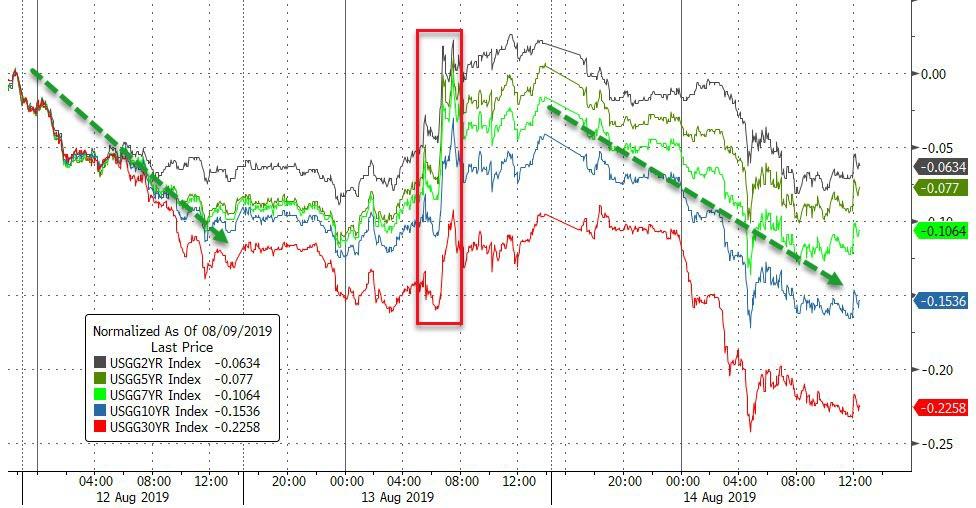
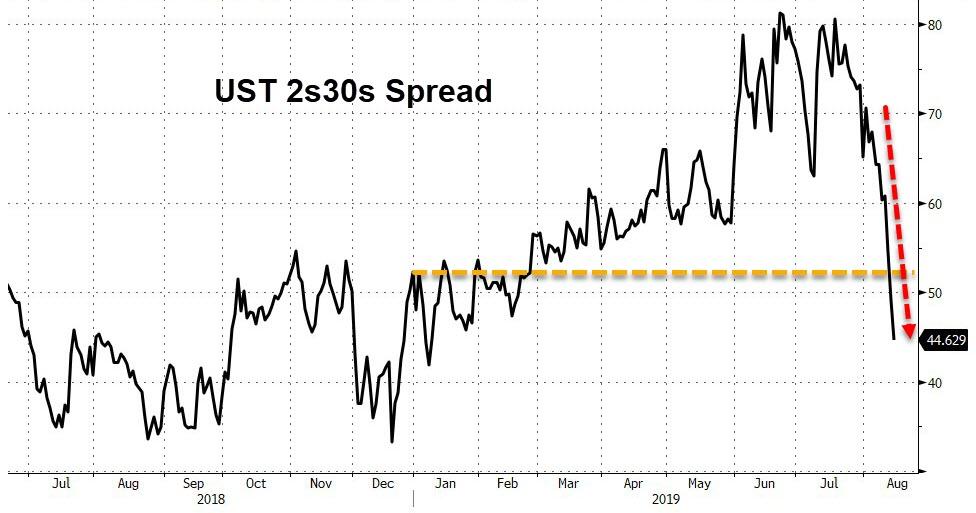
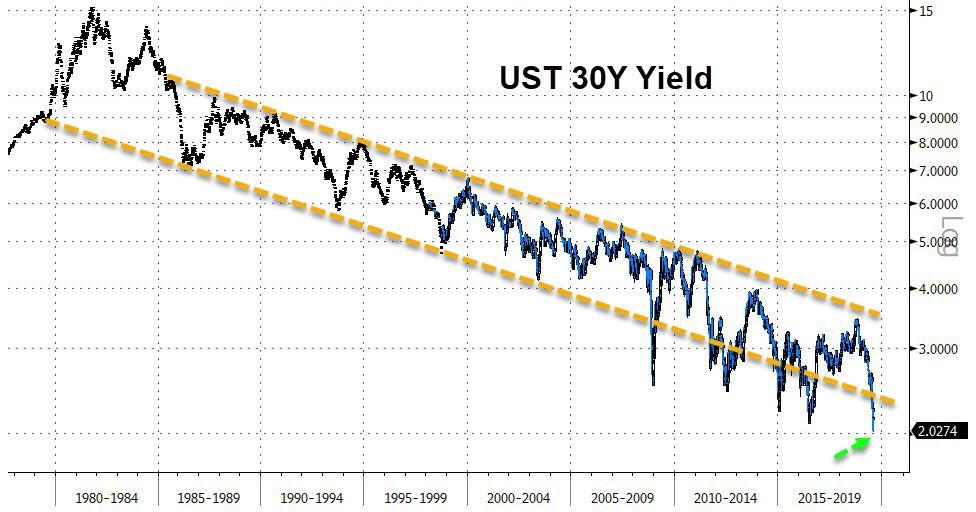
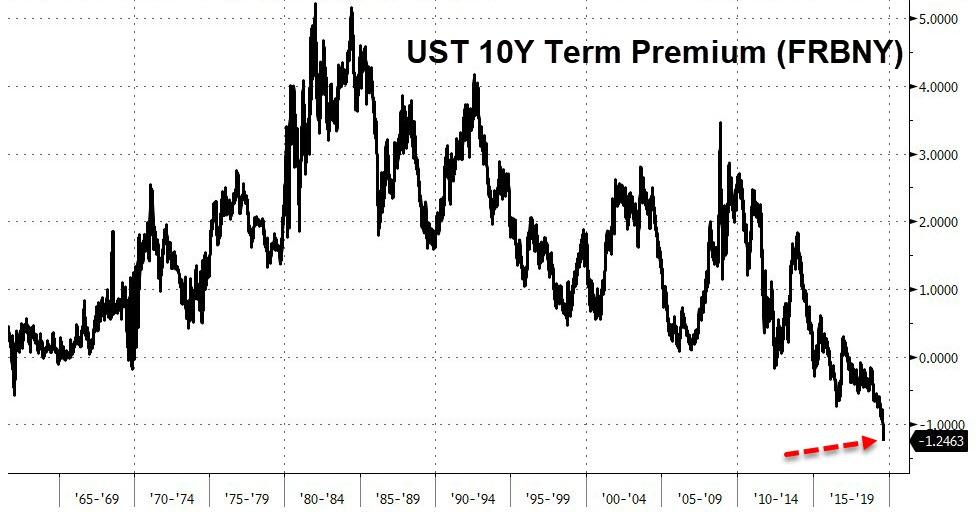
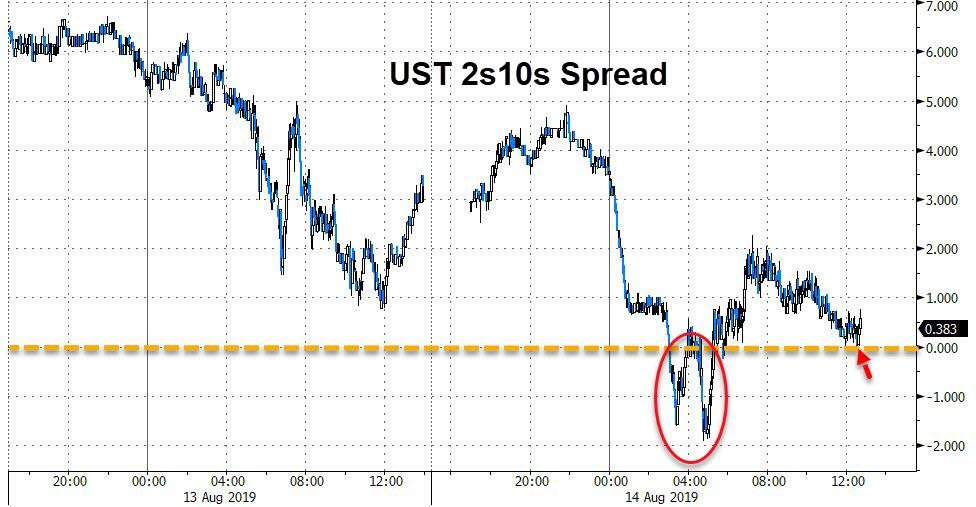
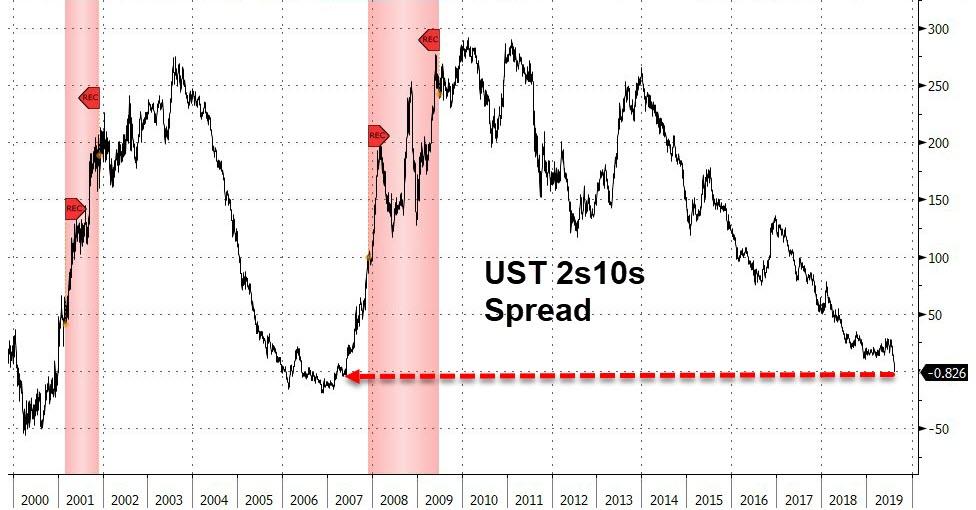
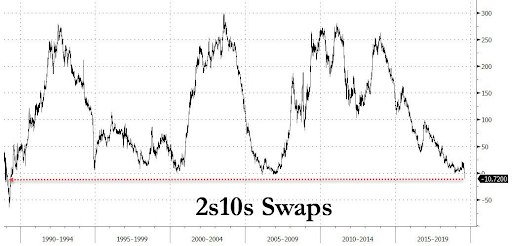
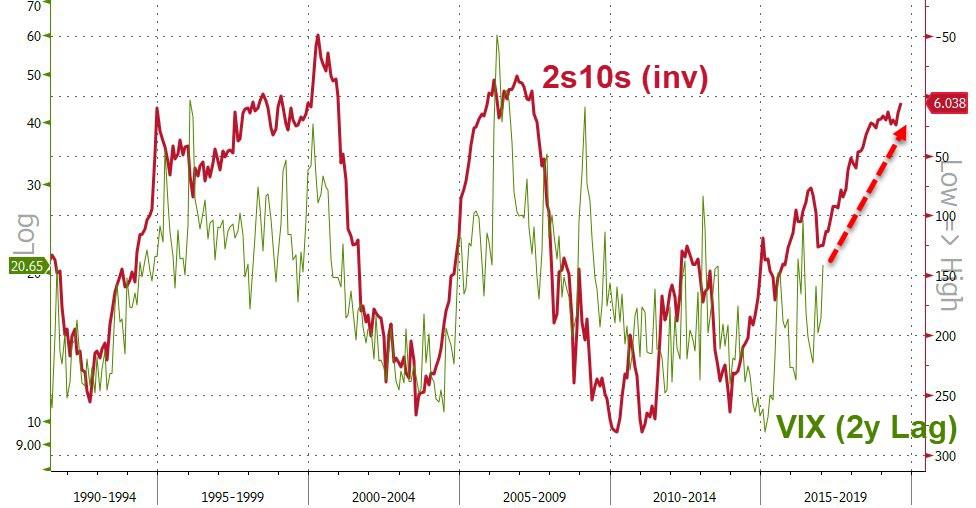
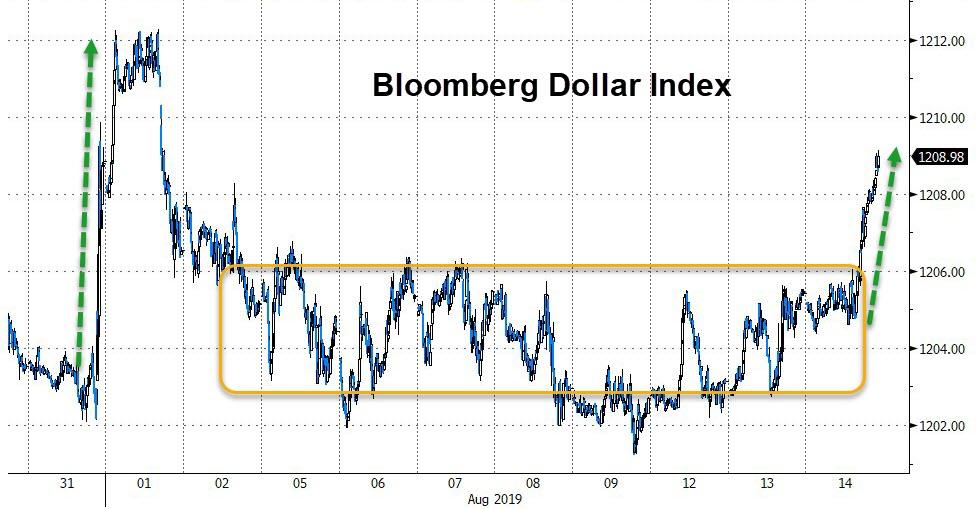
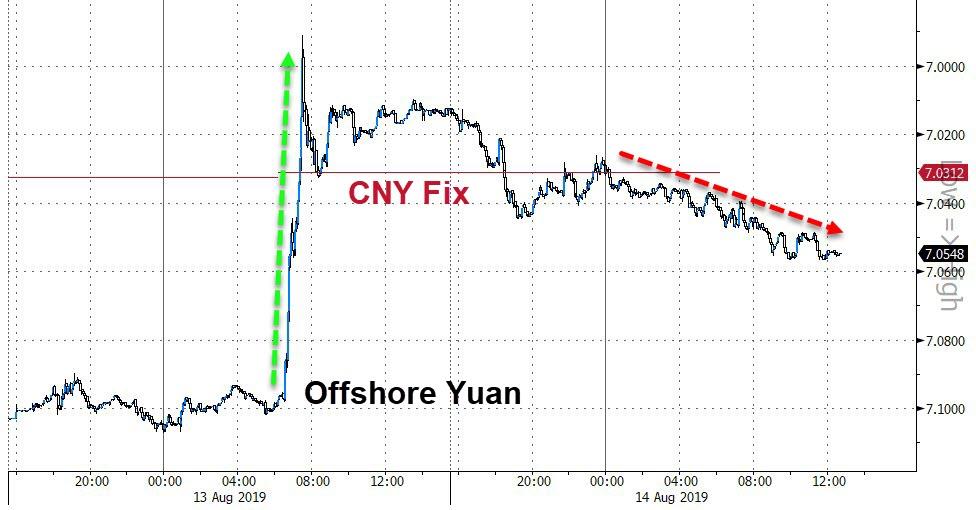
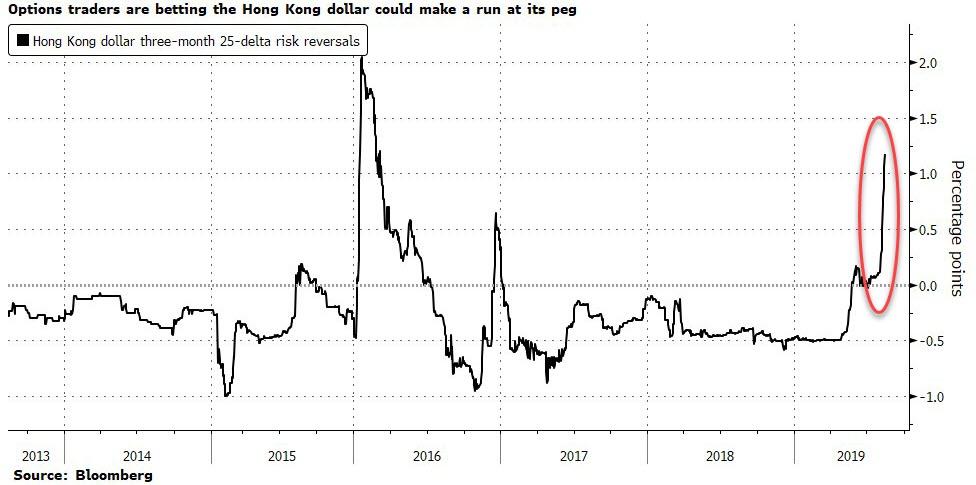
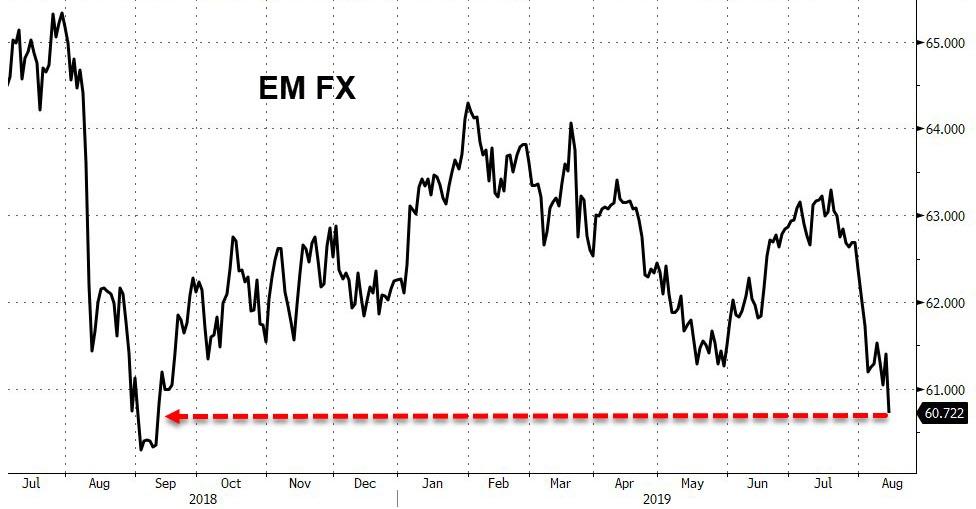
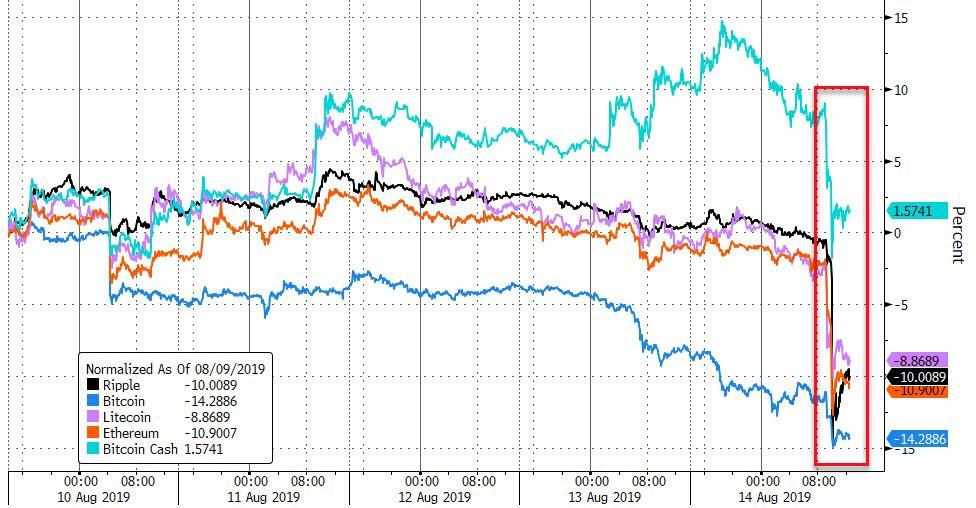
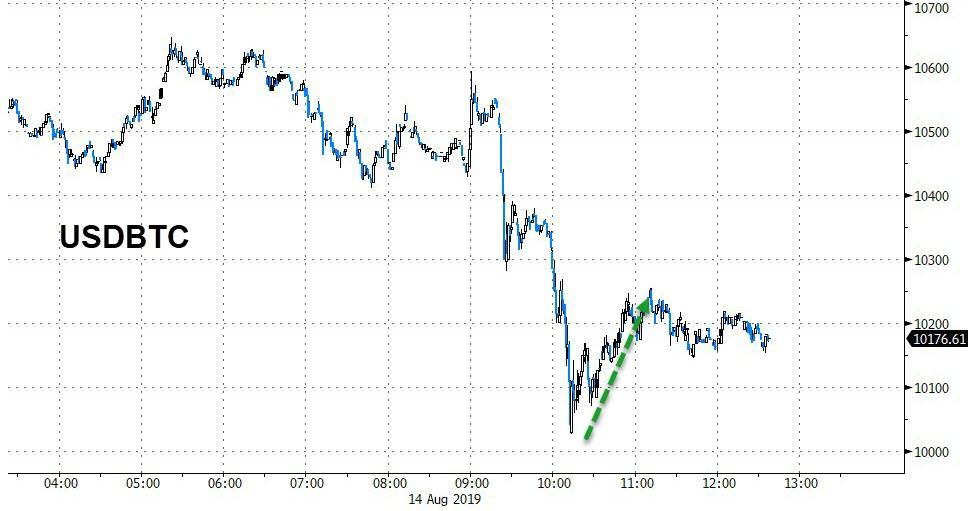
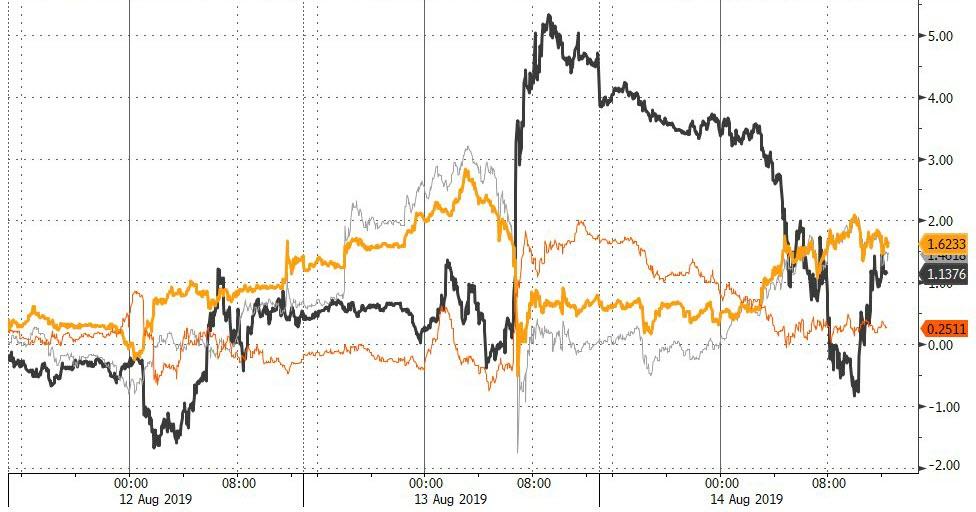
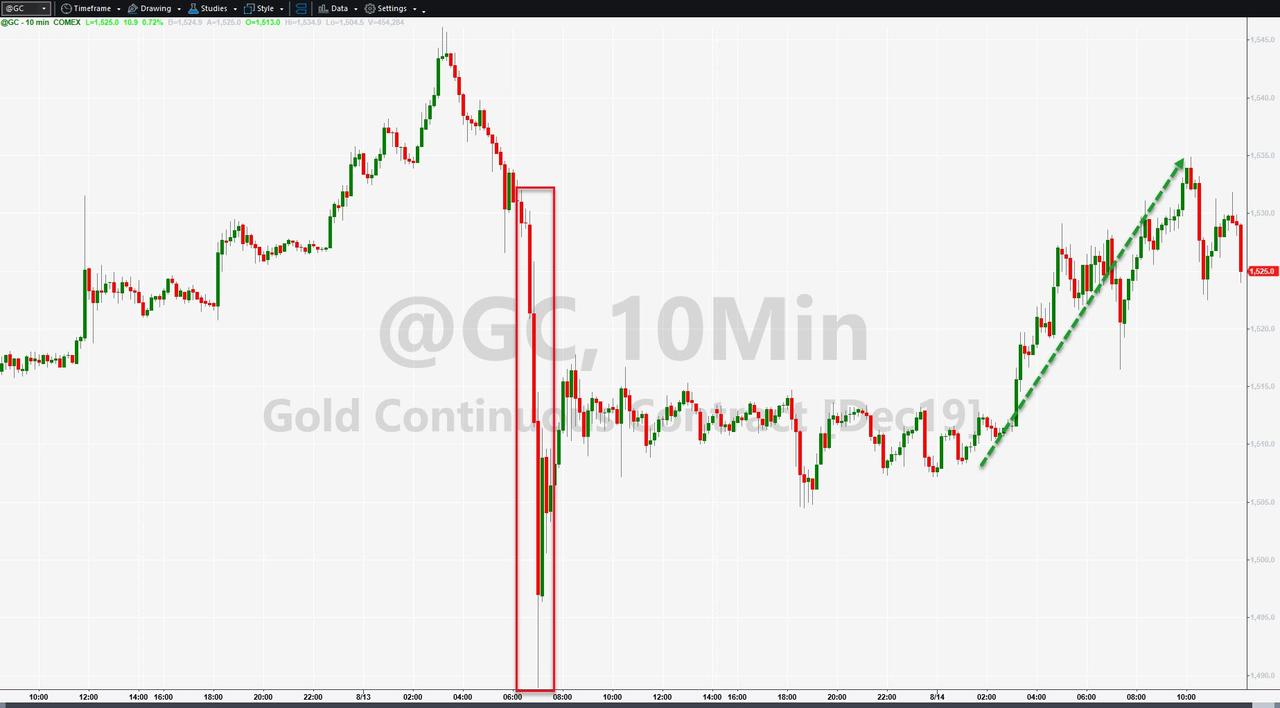
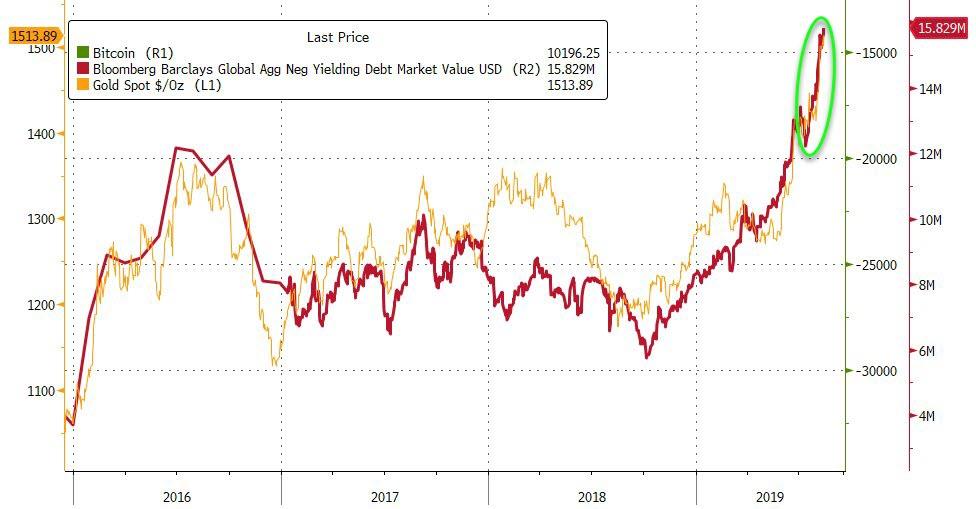
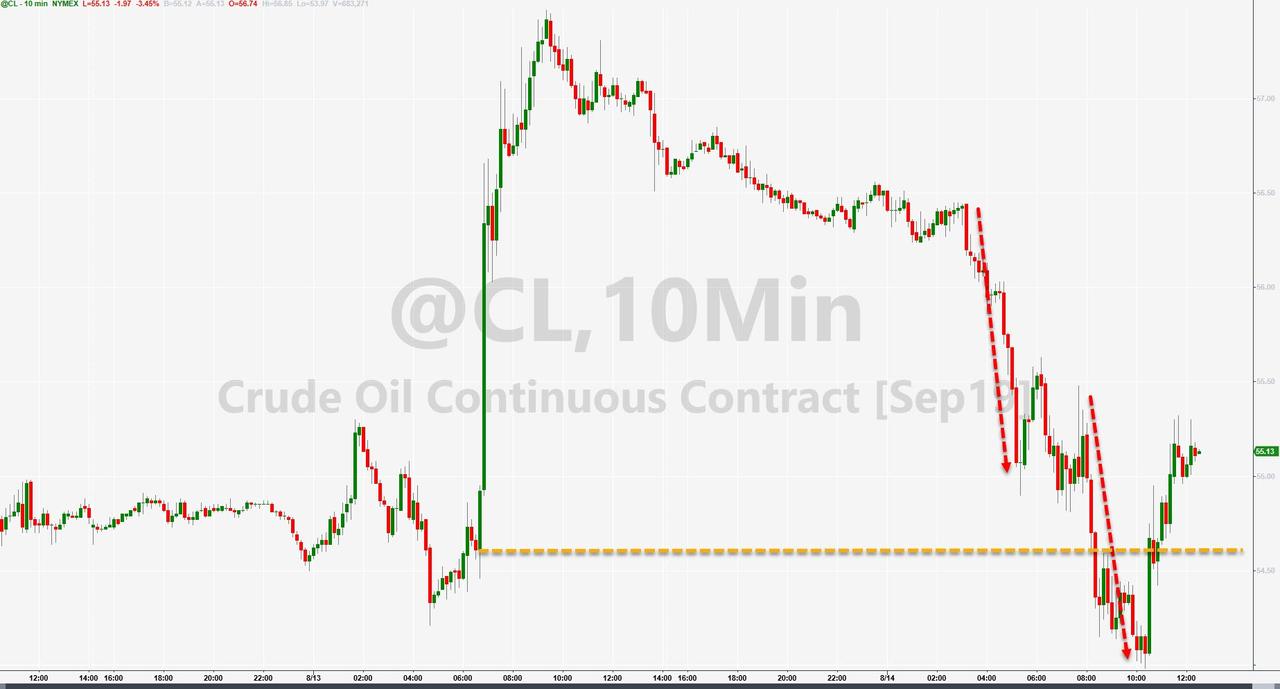
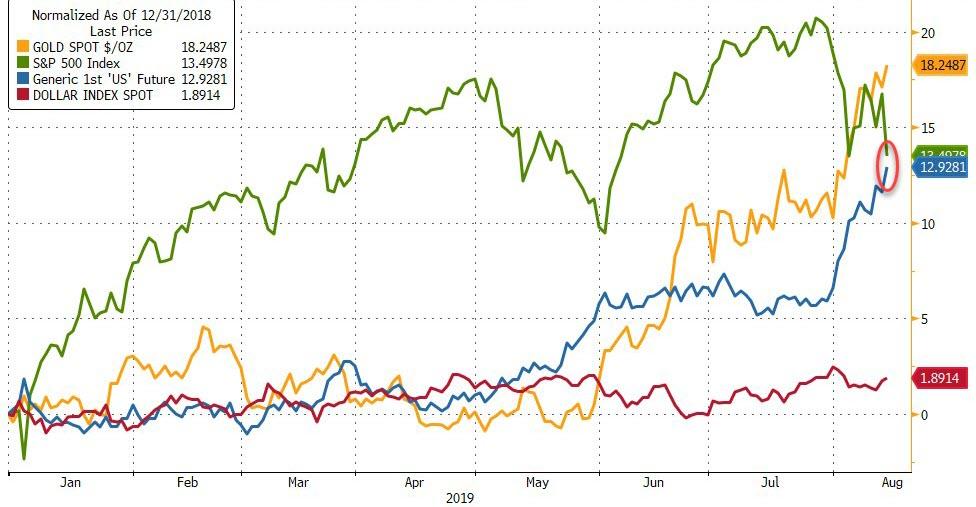
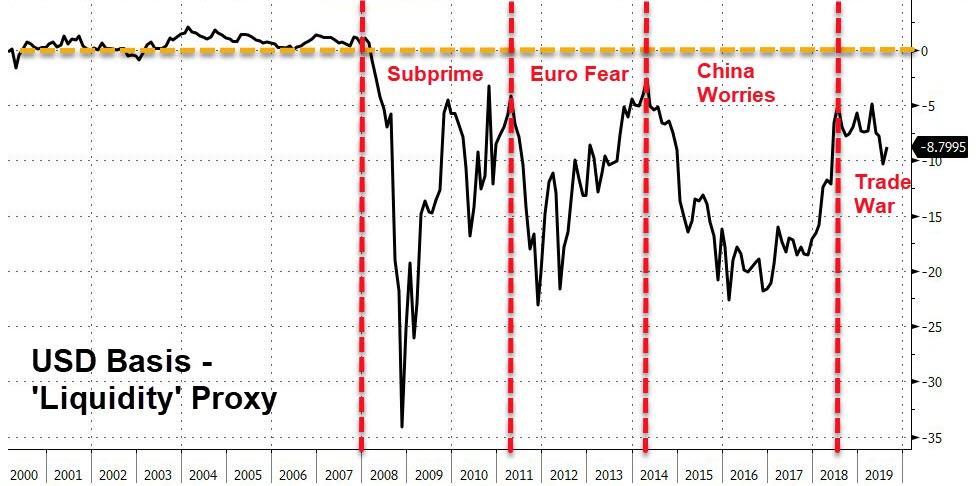
No comments:
Post a Comment
Note: only a member of this blog may post a comment.